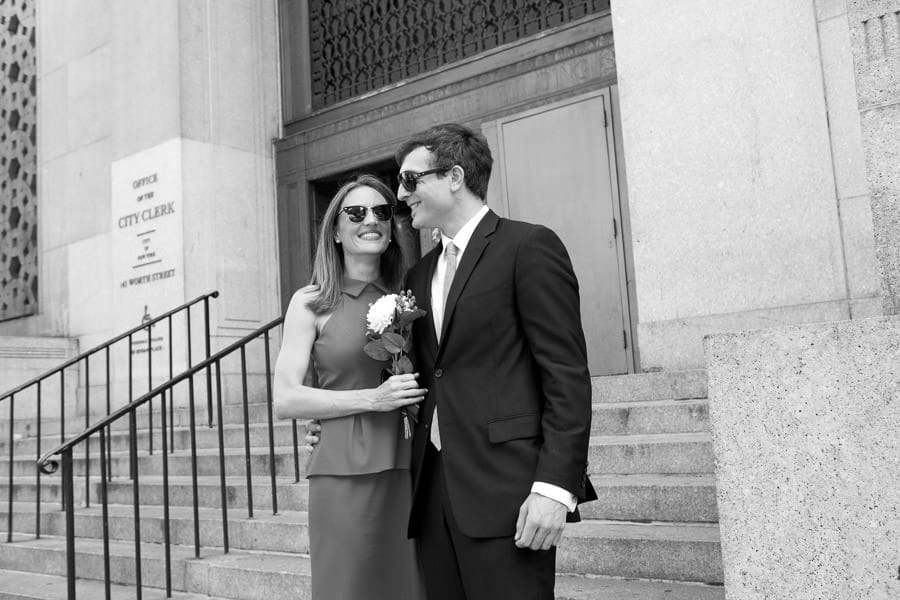How to Best Use a Mailing List for Your Photography Business – Marketing for Photographers

This chapter is an excerpt from the in-depth e-book, Creative Freelance Marketing for Photographers.
Email lists are one of the most effective ways to reach your fans and clients.
When someone joins your mailing list, they give you their permission to reach out to them directly. It is just you and the customer. The benefits of this cannot be overstated. If you base your marketing entirely on a few social media services, you are at the beck and call of those companies.
Take Facebook for example. There was a time where you could create a business page, and all of your fans would see every single one of your posts. There were businesses that funneled all of their fans to Facebook because it was the perfect arena to reach them. It worked well. As Facebook developed and matured, most businesses flocked to it.
Then after its IPO, the company shifted its focus to generating more revenue through advertisements. In addition, because of their rising popularity, there was too much content for a person to scroll through in a day, so they had to limit the percentage of posts people saw.
Over a few years, their algorithm went from showing your business posts to all of your fans for free, to only a small percentage unless you paid them. This is where many businesses chose to grow their entire fan-base, and Facebook is now making them pay to reach them.
This does not mean that Facebook marketing is subpar. This was still a much better result than the company losing their fan-base. Facebook is still a powerhouse; it is the most used social website, by far, and there is value to having a lot of fans through the platform. However, the example above emphasizes your vulnerability when only reaching your fans through an intermediary. Who knows where the site may be in five or ten years?
Mailing lists are one of the few ways to reach your fans without one of these middlemen. Mailing lists have more engagement than any other form of online marketing, and because of this engagement, you can often gain more from a 1,000 mailing list than a 5,000 person Facebook business page. Each newsletter I send is opened by about 40% of the list, and each person opens a message a little over two times. It is also free to send that email except for the monthly fee to the mailing list service.
My open rate is on the high end, but this is due to the quality of the fans that I have brought in and the fact that I make an effort not to abuse the trust that I am given when people sign-up. Many of those fans have read many of my articles and have gotten a sense of who I am and what I do, and so they trust that I am not trying to spam them.

Of course, I sell my art, workshops, products, and services to the list, but I do not overdo it, and I try to provide interesting free content more often than sales. Needless to say, this kind of engagement is very important to my business.
Only include the email addresses of those who give you their permission. Those that have expressed an interest by signing up will begin to expect and look forward to your emails. My email list is filled with people who have visited my website and opted to sign up for the list because they liked what they saw or read. They are interested in my content, and when they no longer are, they can unsubscribe. It is no mystery as to why a high percentage of these people open the emails.
The two strategies to induce people to sign up for your mailing list are through pop-ups and forms. Popups are little boxes that appear in the middle of a web page on your site that ask viewers to sign up for your list. They give the user the option to sign up or click away. I use a popup on my website, but I prefer not to show it right away in order to prevent people from becoming turned off before they have had a chance to look at my content. I put a delay of 40 seconds before new visitors are prompted with the popup, and it is set to only show up every six months per user.
You might have heard that popups are a bad idea, and it might feel like a nuisance when you encounter them on a web page. It sometimes can be, but if someone likes the content on your page, at worst they will close the popup and keep looking, and at best they will sign up. If you have good content, it will not cause many people to leave. The few people that it will cause to leave will most likely not be doing business with you anyway.
Unlike popups, forms are static areas on your site that allow people to sign up for your mailing list. I have a page dedicated to joining my mailing list, but I also intersperse these forms in a few key places on my site. For instance, halfway through my “Pricing and Information” page is a signup form. I figure that if a person has gotten halfway through that page and they have not already signed up, this might be the right place to prompt them.
Another area where I put my signup form is after people purchase my books. Often when I promote my books on other websites, people are sent directly to the book landing page and purchase the product without ever taking a look at the rest of my website. Some of them do not know who I am and might never return to the site. A signup form after the purchase gets them on my mailing list, sends them a welcome email with my work and services, and will get them to visit my website in the future if they were not already planning on it.
Once these people have committed to purchasing one of my products, it is only a small effort (and minimal commitment) to join my mailing list. It can help to put a picture of you on these forms next to the signup area to show that you are a real-life person. It creates a connection and adds a level of trust that would not be there without it.
When people first join your mailing list, you have a chance to send them an email after they join. This is called an autoresponder. Many businesses offer free products or guides to entice people to sign up, which are sent immediately after signup. Some people have autoresponder sequences set-up for months with a different email each week. If you can create a free product that is useful, it can have a huge effect on your mailing list signups. Keep in mind that this product does not have to take you long to make. It just needs to be simple and useful to the people you are looking to sign up.
I send one autoresponder email right after signup, and I use this as a chance to show examples of what the person is going to receive in the future, including my best and most sellable work, examples of my best articles on photography and New York City, and an area to talk about the books I’ve written and my photography workshops. The goal is to use this email to give the person a complete sense of my art and business.
An autoresponder is a prime chance to get your work and services in front of people who are interested. They might have just visited a single page on your site and know nothing about you, or they might be familiar with some of your services but not all of them. This is the best opportunity to educate them because you know they are engaged and expecting an email from you. 83% of signups open my autoresponder and about 65% of people click on a link in the email. Those are big numbers.
It is also important to think about the frequency of your emails. I aim to send out one a month. If you send a daily email, it will probably become very cumbersome for your recipients, and they will either tune you out or unsubscribe, unless every email has stellar and very relevant content. Even weekly can be too much unless there is something beneficial in each email to your user base. For instance, if you send a weekly email with top articles and content from your field in an organized manner, then you can create a situation where the recipient might enjoy that as a weekly read because it is not just about you; it is about the entire area of interest. In this case, a consistent weekly email is great, and people will begin to look forward to it. Otherwise, I would aim for monthly emails.
There are many good choices for email marketing services. I use AWeber, which is one of the industry standards, and Mailchimp is another that is very highly rated. These services make it easy to design emails and forms for your website. You can create a signup form or popup on the AWeber website, add the code to your website, and then change the look of these forms through aweber.com without having to further alter the code on your site. They offer many customizable options, have a robust metric system to track your response rates, and offer good support.
I suggest using a service that tracks metrics well. You want to test your forms, popups, and autoresponders to see how many people have taken the desired and intended actions. Many services offer split-testing, so you can test different popups and email titles to see which have the best open rate. When you send emails, you want to pay attention to how many people open them and what percentage click on your links.
For further education, download Creative Freelance Marketing for Photographers.
